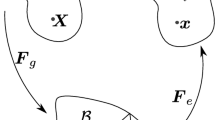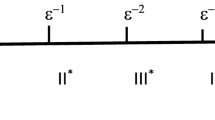Abstract
Using modeling and simulation, we quantify the influence of spatiotemporal dynamics on the accuracy of data obtained from sensors placed in microscaled reaction volumes. The model refers to cellular reaction (i.e. proton extrusion and oxygen consumption) in complex, buffering solutions. Whole cells or viable tissues cultured in such devices are monitored in real time with integrated sensors for pH and dissolved oxygen. A 3D finite element model of diffusion and metabolic reaction was set up. With respect to pH, the effect of buffering species on proton diffusion is analysed in detail. To account for the delayed time response of real sensors, the sensor impulse response time was implemented by linear convolution. A validation of the model has been achieved by an electrochemical approach. The model reveals significant deviations of measured pH and O2, and values of these parameters actually occurring at different sites of the cell culture volume. It is applicable to any setting of (bio-) sensors involving reaction and diffusion of dissolved gases and particularly H+ ions in buffered solutions.





Similar content being viewed by others
References
Anderson ARA, Weaver AM, Cummings PT, Quaranta V (2006) Tumor morphology and phenotypic evolution driven by selective pressure from the microenvironment. Cell 127:905–915
Brischwein M, Motrescu ER, Cabala E, Otto AM, Grothe H, Wolf B (2003) Functional cellular assays with multiparametric silicon sensor chips. Lab Chip 3:234–240
Ceriotti L, Kob A, Drechsler S, Ponti J, Thedinga E, Colpo P, Ehret R, Rossi F (2007) Online monitoring of BALB/3T3 metabolism and adhesion with multiparametric chip-based system. Anal Biochem 371:92–104
Dabagh M, Jalali P, Sarkomaa P (2007) Effect of the shape and configuration of smooth muscle cells on the diffusion of ATP through the arterial wall. Med Biol Eng Comput 45:1005–1014
Ehret R, Baumann W, Brischwein M, Lehmann M, Henning T, Freund I, Drechsler S, Friedrich U, Hubert ML, Motrescu E, Kob A, Palzer H, Grothe H, Wolf B (2001) Multiparametric microsensor chips for screening applications. Fresenius J Anal Chem 369:30–35
Hynes J, O’Riordan TC, Zhdanov AV, Uray G, Will Y, Papkovsky DB (2009) In vitro analysis of cell metabolism using a long-decay pH-sensitive lanthanide probe and extracellular acidification assay. Anal Biochem 390:21–28
Junge W, McLaughlin S (1987) The role of fixed and mobile buffers in the kinetics of proton movement. Biochim Biophys Acta 890:1–5
Lob V, Geisler T, Brischwein M, Uhl R, Wolf B (2007) Automated live cell screening system based on a 24-well microplate with integrated micro fluidics. Med Biol Eng Comp 45:1023–1028
Martin NK, Gaffney EA, Gatenby RA, Maini PK (2010) Tumour–stromal interactions in acid-mediated invasion: a mathematical model. J Theor Biol 267:461–470
Nyquist H (1928) Certain topics in telegraph transmission theory. T Am Inst El Eng 47:617–644
Parce JW, Owicki JC (1992) Biosensors based on the energy metabolism of living cells: the physical chemistry and cell biology of extracellular acidification. Biosens Bioelectron 7:255–272
Perry RH, Green DW (1997) Perry’s chemical engineers’ handbook, 7th edn. McGraw-Hill, New York
Pinsent BRW, Pearson L, Roughton FJW (1956) The kinetics of combination of carbon dioxide with hydroxide ions. Trans Faraday Soc 52:1512–1521
Poghossian A, Ingebrandt A, Offenhäusser A, Schöning MJ (2009) Field-effect devices for detecting cellular signals. Sem Cell Dev Biol 20:41–48
Poling BE, Prausnitz JM, O`Connell JP (2001) The properties of gases and liquids, 5th edn. McGraw-Hill Inc., New York
Rasmussen HN, Rasmussen UF (2003) Oxygen solubilities of media used in electrochemical respiration measurements. Anal Biochem 319:105–113
Ruffieux PA, Stockar U, Ruffieux IWM (1998) Measurement of volumetric (OUR) and determination of specific (qO2) oxygen uptake rates in animal cell cultures. J Biotech 63:85–95
Stam B, van Gemert MJ, van Leeuwen TG, Aalders MC (2010) 3D finite compartment modeling of formation and healing of bruises may identify methods for age determination of bruises. Med Biol Eng Comput 48:911–921
Weast RC (1974) Handbook of chemistry and physics, 55th edn. CRC Press, Cleveland
Wolf B, Kraus M, Brischwein M, Ehret R, Baumann W, Lehmann M (1998) Biofunctional hybrid structures—cell–silicon hybrids for applications in biomedicine and bioinformatics. Bioelectrochem Bioener 46:215–225
Wu M, Neilson A, Swift AL, Moran R, Tamagnine J, Parslow D, Armistead S, Lemire K, Orrell J, Teich J, Chomicz S, Ferrick DA (2007) Multiparameter metabolic analysis reveals a close link between attenuated mitochondrial bioenergetic function and enhanced glycolysis dependency in human tumor cells. Am J Physiol Cell Physiol 292:125–136
Acknowledgments
The authors are greatly indebted to Prof. Junge, Dr. Helmut Grothe, Dr. Joachim Wiest, and Dr. Christian Krause for fruitful discussions, to the Heinz Nixdorf foundation and the German Federal Ministry of Education and Research (BMBF) for financial support, and to cooperating partners, notably HP Medizintechnik GmbH (Oberschleissheim, Germany), Erwin Quarder Systemtechnik GmbH (Espelkamp, Germany) and Softwarehaus Zuleger GmbH (Ottobrunn, Germany) for their commitment in that project.
Author information
Authors and Affiliations
Corresponding author
Rights and permissions
About this article
Cite this article
Grundl, D., Zhang, X., Messaoud, S. et al. Reaction–diffusion modelling for microphysiometry on cellular specimens. Med Biol Eng Comput 51, 387–395 (2013). https://doi.org/10.1007/s11517-012-1007-4
Received:
Accepted:
Published:
Issue Date:
DOI: https://doi.org/10.1007/s11517-012-1007-4




